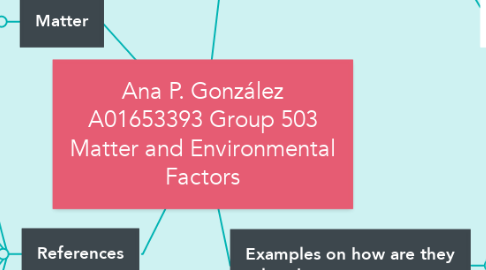Ana P. González A01653393 Group 503 Matter and Environmental Factors
by Ana González


1. Matter
1.1. Matter studies the mass and the energy. The mass is how matter exists in particles. It is also the measurement of the matter. Energy is the capacity of doing work and produce change. There are many types of energy: the kinetic, thermal, electrical, nuclear, chemical, potential energies and many more.
2. References
2.1. matter | physics (2017). Encyclopedia Britannica. Retrieved 9 August 2017, from https://www.britannica.com/topic/matter
2.2. mass | physics. (2017). Encyclopedia Britannica. Retrieved 9 August 2017, from https://www.britannica.com/science/mass-physics
2.3. energy | physics. (2017). Encyclopedia Britannica. Retrieved 9 August 2017, from https://www.britannica.com/science/energy
2.4. Abiotic vs Biotic - Difference and Comparison | Diffen. (2017). Diffen.com. Retrieved 9 August 2017, from http://www.diffen.com/difference/Abiotic_vs_Biotic
3. Environmental Factors
3.1. What we consider part of the environment are the physical, chemical, biological, economical, cultural and social components. These factors at the end can cause an impact on living things.
3.2. We also have to consider "abiotic"and "biotic"factors in order to see how the environment or ecosystem reacts or is interconnected.
3.2.1. Abiotic: Non-living things. For example: water, soil, sunlight, air, minerals, etc.
3.2.2. Biotic: Living things. For example: animals, fungi, bacteria, plants, etc.
